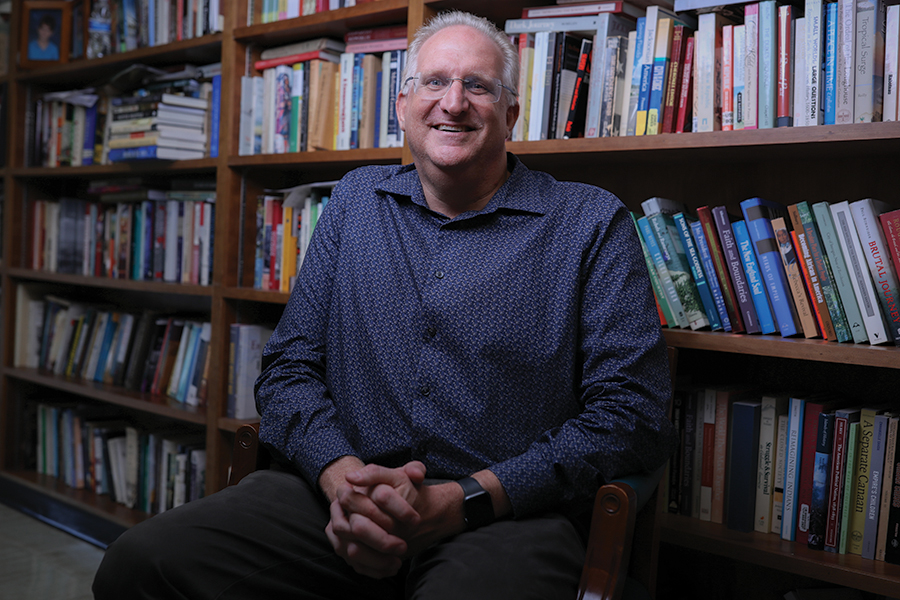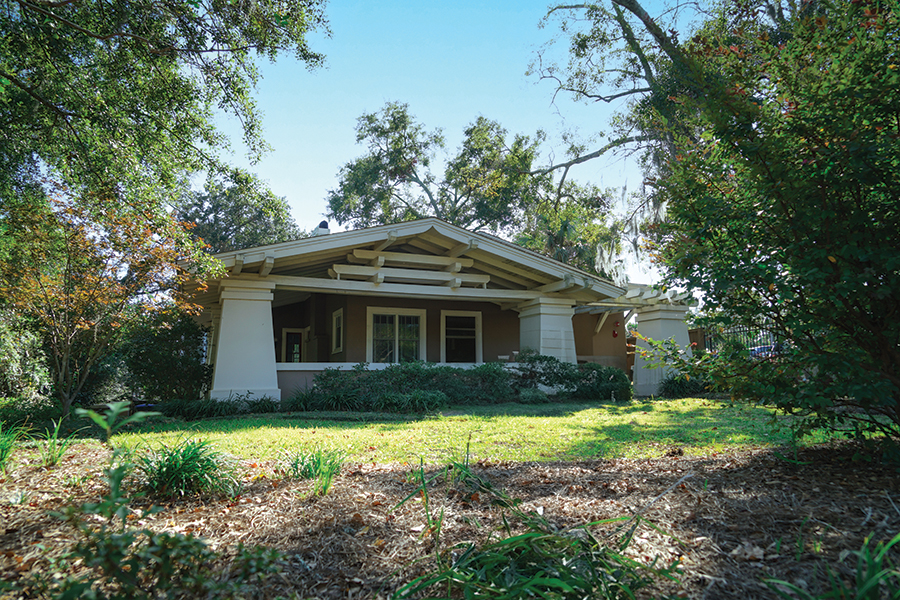Seminole Scholarship

Most students arrive at Florida State University excited to become the newest class of Seminoles, but few understand at that moment the depth of history, courage, and community imbued by the name.
Enter Andrew Frank, Allen Morris Professor in the Department of History, who teaches one of the most highly attended courses each semester — History of the Seminoles and Southeastern Indians. The course, which may be the lone chance some students have to take a Native American history class, attracts interest from nearly every FSU discipline and introduces non-history majors to this pivotal part of history.
Frank, who joined FSU’s faculty in 2007, takes seriously the opportunity and aims to demonstrate that historical scholarship goes beyond reading old books to memorize and reshuffle facts according to tenets of modernity.
“There’s so much we don’t know about the past and so many details we haven’t paid attention to because we didn’t deem them important,” he said. “But when we look at a wider range of evidence and ask new questions, the past can look really different.”
Since graduate school, Frank’s research has centered on Indigenous peoples. His doctoral studies at the University of Florida focused on the Creeks, and his dissertation-turned-book, “Creeks and Southerners: Biculturalism on the Early American Frontier,” examined families formed in the American South between Creek mothers and English fathers. As an assistant professor at Florida Atlantic University in Boca Raton in the mid-2000s, Frank inherited an extensive collection of works on Seminole history, which, along with his proximity to the Seminole Tribe, inspired his specialization and eventual transition to FSU.
“I hope to help the Seminoles as they tell their own history,” he said. “Among the things I provide is an academic voice to echo what they’ve said about their history for a long time. Seminoles are the best repositories of their own history. They do a marvelous job of educating the public with the world class Ah-Tah-Thi-Ki Museum on the Big Cypress Seminole Indian Reservation.”
Using archaeological records, written documents, oral history, and collective communal knowledge, Frank explores the history of the Seminoles and Indigenous Floridians from before the written record to present day. His work reframes the Seminoles as Indigenous people rather than migrants. The year in which the Seminoles migrated to Florida is a common historical misconception: In archaeological and historical record, as well as oral history, the Seminoles have been in Florida longer than the written record.
Frank helps communicate Seminole history via lectures, media engagements, and books, including “Before the Pioneers: Indians, Settlers, Slaves and the Founding of Miami,” and the forthcoming “Those Who Camp at a Distance: The Seminoles and Indians of Florida.”
With the formal establishment this fall of the FSU Native American and Indigenous Studies Center, of which he serves as founding director, Frank is further broadening Indigenous scholarship at the university and beyond.
“The center works from the knowledge that the Seminole Tribe of Florida and other Indigenous nations see Tallahassee and other FSU campuses as their homelands,” Frank said. “It also acknowledges that FSU has called itself the ‘Seminoles’ since it became a coeducational school in 1947. This relationship extends beyond our use of the tribe’s name and symbols in athletics. The center exists as part of a larger commitment of the university to collaborate with the Seminole Tribe of Florida as intellectual partners.”
The NAIS Center intellectually unites more than two dozen experts from FSU programs and entities, including anthropology, art, art history, geography, history, modern languages and linguistics, music, nursing, religion, social work and the FSU Libraries, to create scholarship on past and present Indigenous communities and serve as a hub to share research.
The physical center is envisioned as an inviting space for students to connect with Native American culture and interact with Indigenous art and cultural artifact displays on loan, and its College Avenue location and proximity to the iconic Westcott Plaza are intentional marks of respect.

“The NAIS Center adds a necessary component previously missing from our academic community, and we’re pleased to provide support,” said College of Arts and Sciences Dean Sam Huckaba. “Andrew Frank and his colleagues across campus have been working with and studying Indigenous communities for many years. The center provides a more cohesive approach and opens doors to meaningful outreach and engagement opportunities.”
NAIS researchers have already connected with Native American historic preservation offices to incorporate their voices into the center, including the Seminole Tribe of Florida, the Seminole Nation of Oklahoma, the Miccosukee Tribe of Indians of Florida, the Catawba Nation in South Carolina, and the Muscogee (Creek) Nation and Choctaw Nation in Oklahoma.
“Our goal is to become the regional showcase for what partnering with a tribe means and the intellectual benefits derived, both for these tribes and ourselves,” Frank said. “Florida State can become a centerpiece of scholarship on Native American and Indigenous studies.”
Learn more about the Native American and Indigenous Studies Center at nais.fsu.edu.
Dena Reddick is an FSU alumna who earned master's degree in history in May 2020.
